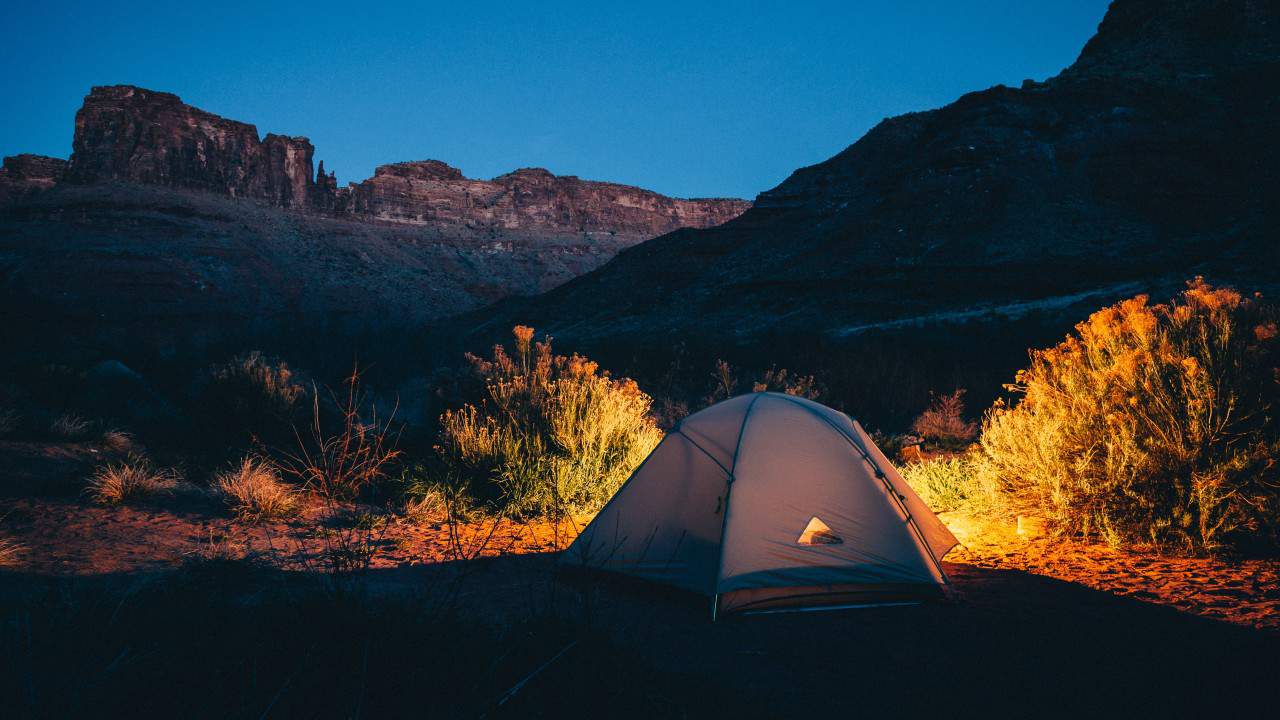In this article, we’re going to describe some of the best dispersed camping spots in Moab, Utah, so you can have some idea of where to pitch your tent or park your RV.
If the name ‘Moab‘ sounds like it came straight out of the Bible, that’s because it has.
As the first Mormon settlers of what is now the US journeyed through the territory of today’s Utah, they called the area they eventually settled on ‘Moab.’ This is because the Biblical Moab was a place on the other side of the river Jordan, just like the Utah Moab is south of the Colorado river.
While the Moab area is only sparsely populated, with just over 5,000 people living in it, it represents a top-rated tourist destination – thanks to its breathtaking picturesque scenery.
It’s no wonder this area served as a film set for quite a few movies, including such gems as Indiana Jones and the Last Crusade and Mission Impossible II.
Besides its incredible red rock landscape attracting so many people to this area, over Moab, you can witness the darkest night sky in the US. Many people visit Moab just for its fantastic stargazing potential.
Now, what do sparsely-populated, picturesque scenery, beautiful night skies, and mysterious, movie-set-worthy craters all suggest?
Yup, a perfect camping area.
Overview of Free Camping Near Moab
For a camper, the list of cool things you can experience in Moab goes on and on.
Do you like hiking and mountaineering? – Plenty of trails with some of the prettiest red rock formations you can see anywhere in the world.
Are you into fishing? – Sunfish, bass, and catfish galore swimming in the mighty Colorado river.
Fishing and hiking? – You can take a little detour and go into the neighboring La Sal mountains, where there are mountaineering trails AND Green Colorado Cutthroat trout.
A perfect area for some recreational fly fishing.
Some of the other activities that you can pursue in Moab include 4×4 dirt tracking in a place called Hell’s Revenge, going rafting in some of the rougher parts of the Colorado River, or visit the Moab Giants dinosaur park.
We’ll talk more in detail about the rules and regulations of camping in Moab and point out some RV-friendly places in case you want to take your trusty four-wheeler camping with you.
We’ve also prepared a list of the best camping spots in Moab, so you can have some perspective of where you can go once in this huge red rock expanse. And if you are interested in camping in a similar setting, check out our guide to camping in New Mexico and this guide to dispersed camping in California.
Where in Moab Is Dispersed Camping Allowed?
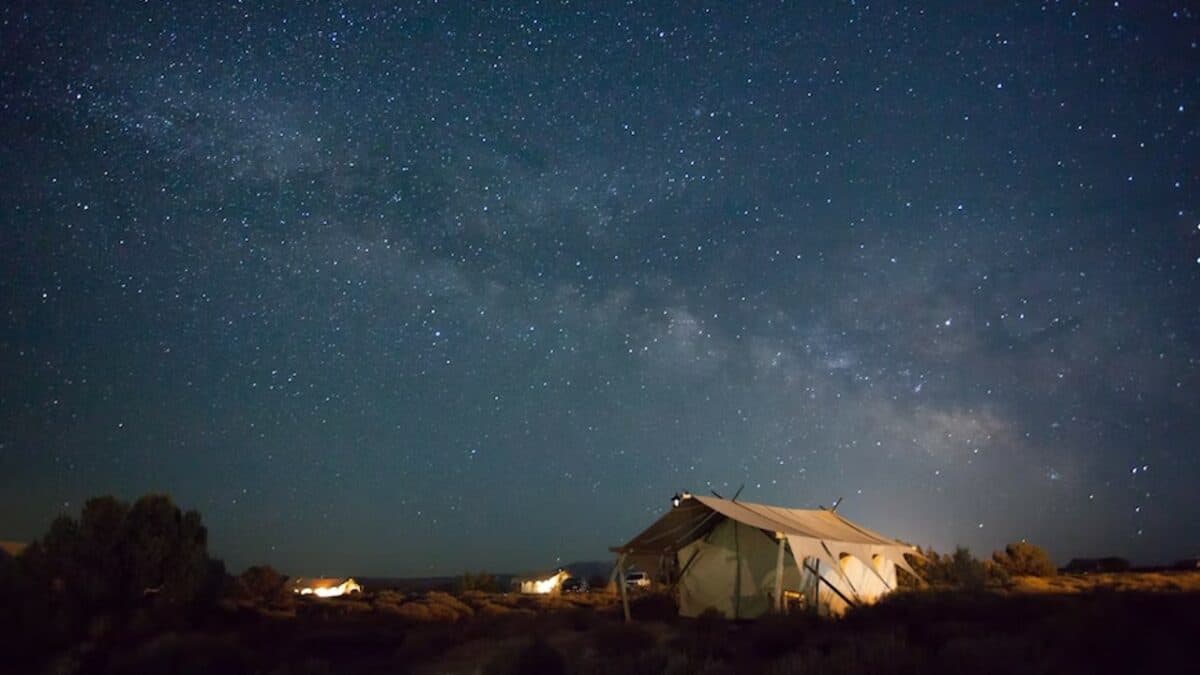
The good news for the folks who are into free camping is that Moab and the surrounding area offer some of the best dispersed camping spots in the US.
Since the US offers some of the most scenic Wild West camping spots in the world – this makes Moab one of the best camping areas in the world by extension.
When it comes to figuring out what parts of Moab are suitable for dispersed camping, the folks to talk to would be the BLM (Bureau of Land Management).
If you’ve ever Googled a US camping location, you’ve probably already heard of the BLM and know about their rather important role in preserving the local ecosystems.
What BLM does in Moab, in particular, is oversee a vast area of some 1.8 million acres of land full of picturesque canyons, arches, spires, mesas, cliffs, and caves.
Generally, you are allowed to camp at a single location for two weeks in total within one month.
Once that month’s elapsed, you can continue camping in Moab, but you need to move at least 30 miles from the initial campsite.
In addition to the BLM-controlled land, there are also two national parks in the Moab area – Arches National Park and Canyonlands National Park.
To camp on the territory of these two, you will need a special permit issued by the National Park officials.
It is possible to get timed tickets for individuals and vehicles, and there are several discounts and special offers for veterans, the elderly, and volunteers. (Of course, this only applies to US citizens.)
Despite its huge size, the Moab area is justifiably a tourist hotspot, so you should consider booking a reservation if you plan to go there during the busiest months (March to May and September to October) and have a particular area in mind around Moab where you’d like to stay.
If you are interested in similar camping environments, check out our guide to camping in Death Valley as well.
Dispersed Camping Rules & Regulations in Moab
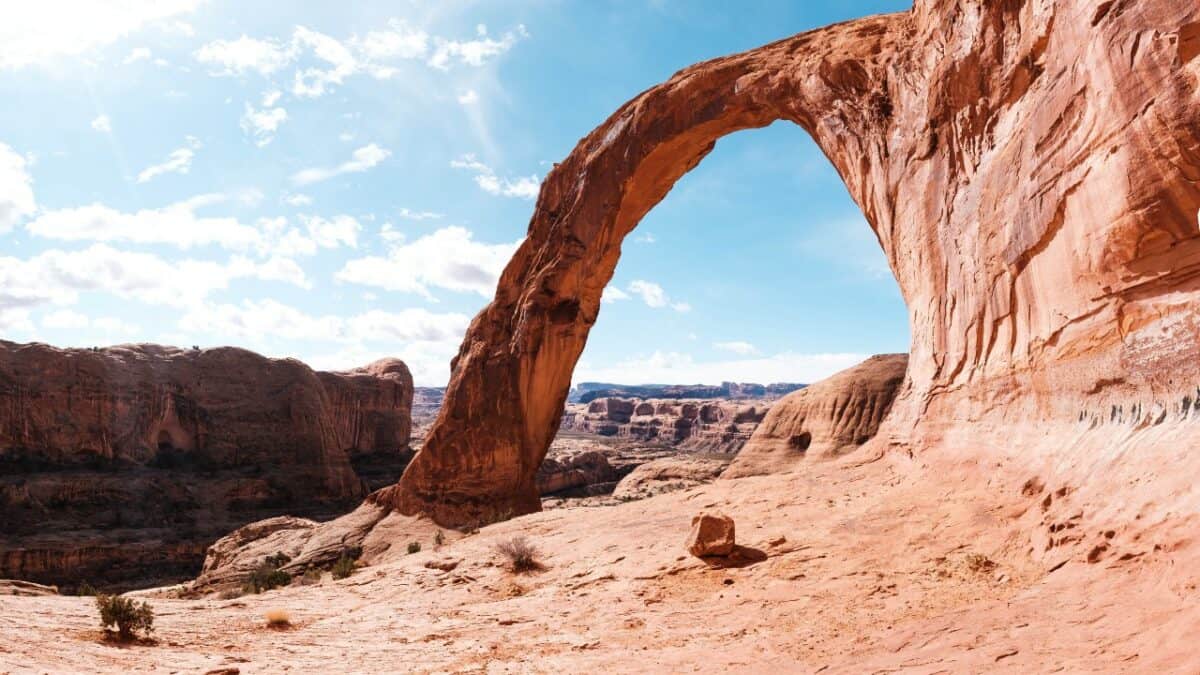
When it comes to the rules and regulations that you have to adhere to in the BLM administrative areas, they are the same in Moab as in pretty much any other US camping area.
There are some special guidelines connected to camping in Moab that you wouldn’t find in many other places – mostly because of the cultural and historical significance of this region and its native peoples.
These are some of the BLM Do’s and Don’ts for the Moab area specifically:
Dos:
· Hydration – Make sure to stay well-hydrated throughout the day – especially if you’re hiking or engaging in other demanding physical activity outdoors. Drinking at least 1 gallon of water per day is recommended.
· Waste disposal – Either use public restrooms or, if there aren’t any where you pitched your tent, make sure to pack your waste and dispose of it safely later on.
· Preserving nature – The desert ecosystem is rather fragile in many areas with a lot of low grass and soil that don’t see rain so often. For this reason, the BLM recommends hiking on specially marked trails and driving on roads and routes that are designated for this purpose.
Don’ts:
· Camp in bad weather – Stay out if the weather is about to get rough. Storms with plenty of electrical discharge are quite common in the desert, and the only real way to protect yourself is to stay indoors. If you’re out hiking during a storm, chances are – you’re the tallest living organism around, which marks you as the most likely target of a random lightning strike.
· Upsetting the points of cultural heritage – The region around the town of Moab is the site of some of the oldest cave and rock drawings and markings made by the ancient native peoples. Moving, taking some of the rocks, or even touching them is strongly prohibited, so make sure only to watch and take pictures if you come across some of these cultural rarities.
· Adding your contribution – The ancient markings and pictures are now considered the area’s cultural heritage, so it is prohibited to scratch, paint, or otherwise alter the rocks or surfaces with some of your art or signature.
To acquaint yourself with some other important pieces of advice and information that the BLM issues regarding the Moab area, you can check out this online pamphlet.
RV Dispersed Camping in Moab
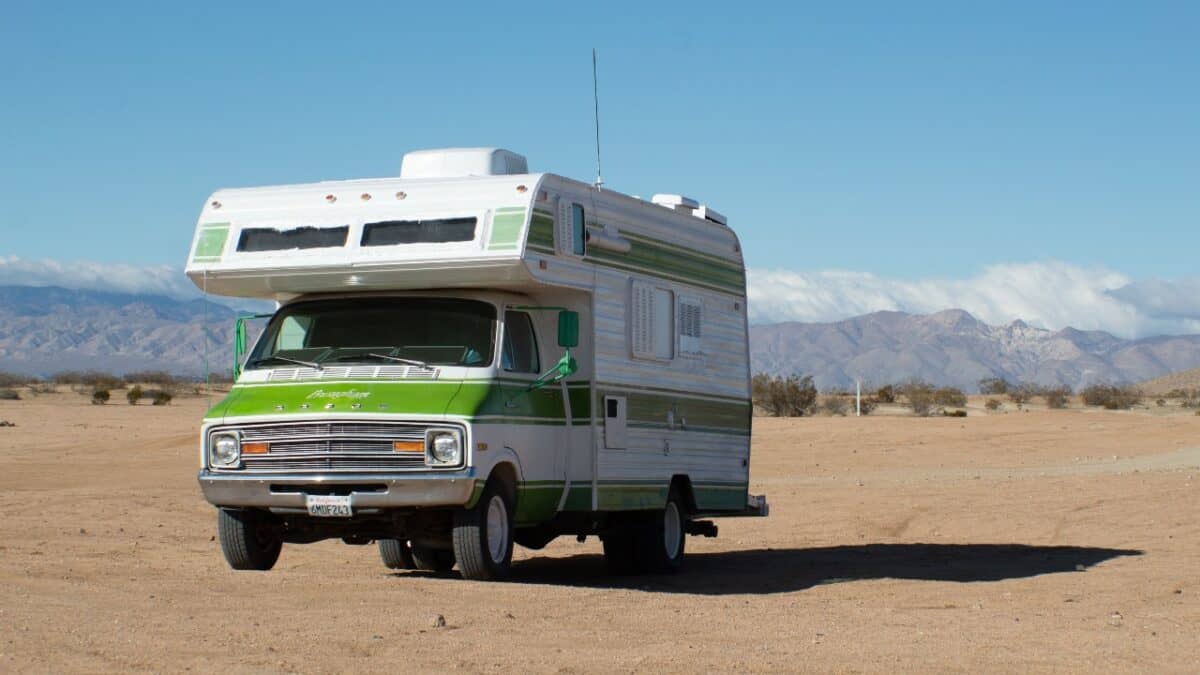
If you’re considering braving the red rocks and dry earth flatlands of Moab with your trusty RV, the good news is that there are plenty of RV-friendly places in this area.
And when we say friendly – you get several designated RV campgrounds that enable you to get a hookup together with showers, free Wi-Fi, wheelchair accessibility, pet-friendly premises, and plenty of shade and trees for a more pleasant stay.
That said, one thing that you’d need to take into consideration would be to book a reservation well in advance, because spots such as OK RV Park and Spanish Trail RV Park, for example, tend to be packed with campers – especially during the peak season (March 1st – July 5th, September 1st – November 15th). Booking a reservation for a time slot during peak season tends to be more expensive.
Regarding the maps of this area, there are a couple of well-developed ones you can download from the BLM’s official website. Here are a couple of useful map links for motorists:
· Moab Motorcycle and ATV Routes
· Moab Area Road Network for RVs – (This map also shows the points of interest and whether or not they are accessible for RVs, so this should be your primary point of reference if you’re an RV camper.)
Best Dispersed Camping Areas in Moab
As you’ve seen from the paragraphs above, Moab represents one of the most attractive camping spots for folks from across the US and worldwide. There’s stuff there for dirt bikers, fishermen, mountaineers, rafters, stargazers – you name it.
In this section, we will concentrate on the best camping areas for dispersed camping. This type of camping brings its special joys, so finding the best spots where you can set up a dispersed camp is akin to finding a gold mine.
Without further ado, these are the best dispersed camping areas in Moab:
Castleton Tower Campground
- Map
- Camping frequency: Busy
- Restrooms: Pit toilets
- Water: No
Representing one of the most famous rock-climbing destinations in the world, the Castleton Tower is not so much a tower as it is a giant rock, shaped kind of like a tower.
Castleton Tower looms over the surrounding area, acting as a sort of monolith. Many mountaineers from around the world flock to scale one of its several well-known ascents.
As far as camping is concerned, there are quite a few dispersed camping spots at Castleton underneath this majestic work of nature. Now this area does not fall into the category of dispersed camping, but it is free to camp here – if you get there on time, that is.
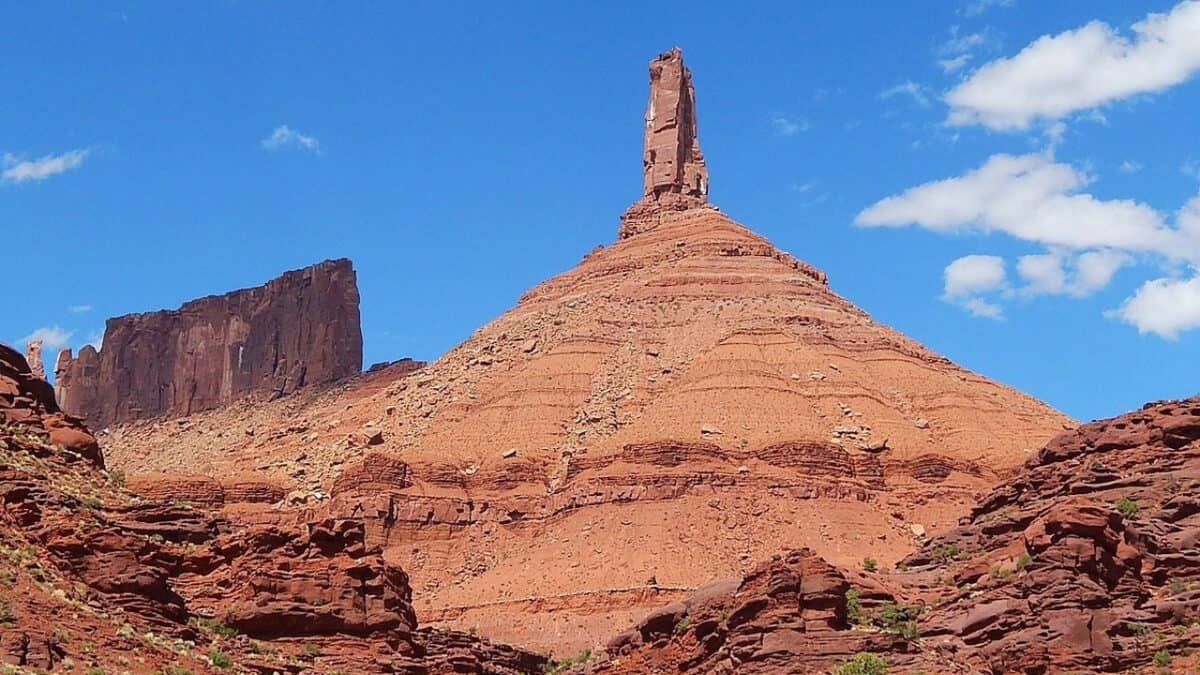
The scenic view of the tower and its no less impressive surroundings recommend this Moab area for camping. But many other people think so, too, so visiting during the peak season requires some preparation.
For example, you might want to avoid it during the weekends when climbers flock to this location. Also, be prepared for many nighttime parties around you, and some early-morning jingle-jangle and clutter of stainless-steel jugs, reinforced mountaineering boots, and other rock-climbing equipment.
Castleton tower is quite easy to find as it is no more than half an hour’s drive from the center of Moab and it also has that tall apartment building-like rock towering above everything else – so you can’t miss it.
Here’s an additional, BLM-issued map of Castleton tower and valley.
Willow Springs Road
- Map
- Camping frequency: Busy
- Restrooms: No
- Water: No
Willow Springs Road is a campsite that stretches along the road of the same name.
In terms of what kind of camping you can experience here, two words describe it perfectly – busy and desert.
The thing is, even if you probably don’t imagine a patch of desert to be a bustling place – but because Willow Springs Road is near the Arches National Park, it has become quite a popular camping spot.
Another thing that makes this road so popular with campers is, well, that it’s a road – so, perfect for RVs, ATVs, and other vehicles.
While the number of campers that tend to frequent this place does mean some trash and loud noises here and there, this camping area more than compensates for this with its sheer size.
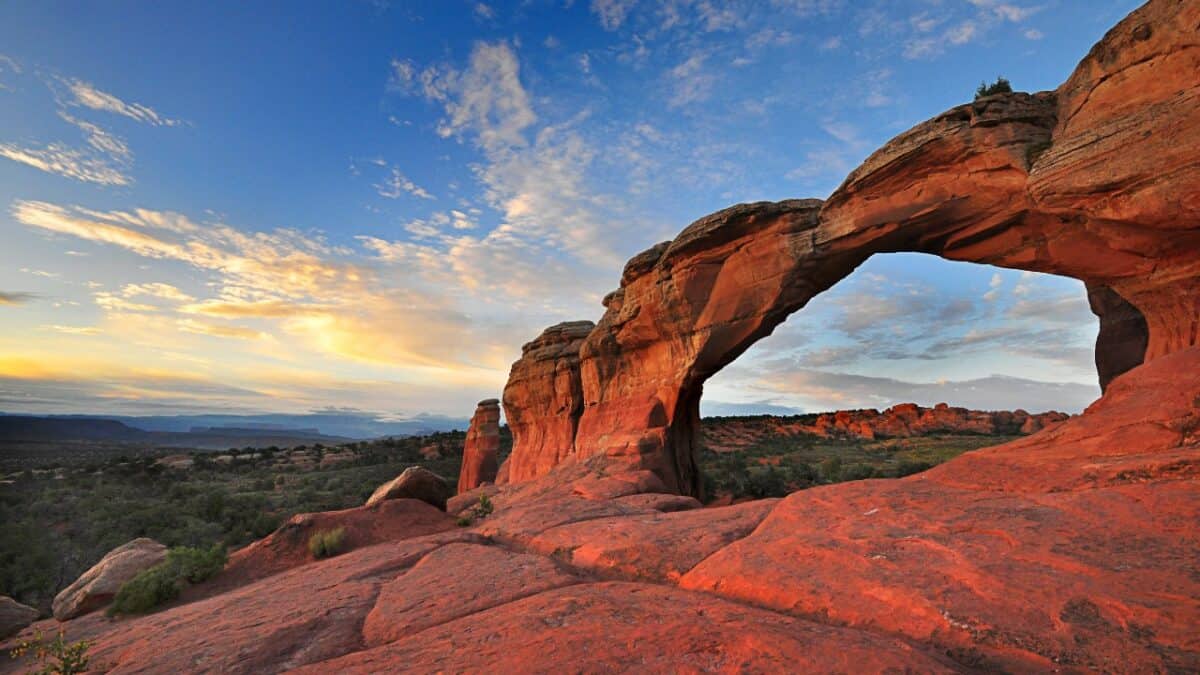
So, no matter how many campers there are in this place – rest assured that you will be able to find a patch for you, your friends and family, your RV, or your tent.
Yellow Circle Road Dispersed Camping
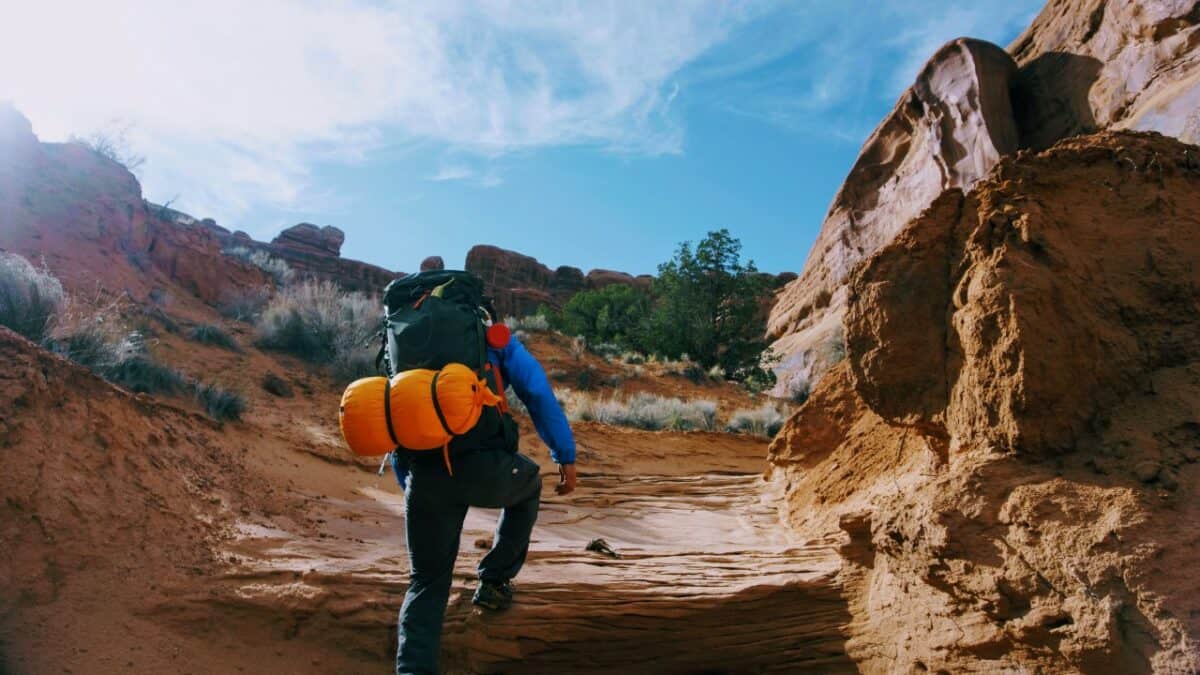
- Map
- Camping frequency: Moderate
- Restrooms: No
- Water: No
If you want to experience desert camping in its purest form but still be in the relative vicinity of the town of Moab – the Yellow Circle Road might just be the camping destination for you.
Yellow Circle Road is pretty much a road that stretches for miles on end, and is surrounded by beautiful scenic views that are so characteristic of the Moab area. There are only 11 miles between the town and the start of this road, so you can easily be there in a couple of minutes – even if your main staying place is in the town proper.
RV camping and tent camping is allowed along this road.
Even if you have a big rig RV, you will be able to find a place to camp, but you should also be aware that this road is fairly popular with other RV campers.
If you don’t have a big rig, a great way to spend some quality camping time on Yellow Circle Road is to go a bit further along the routes that the big rigs cannot access.
There you will find plenty of cool places to set up camp, there won’t be as many folks around you, so it’s a more private kind of vibe, and also – the scenery will be just as beautiful as anywhere in or around Moab.
Long Canyon Road
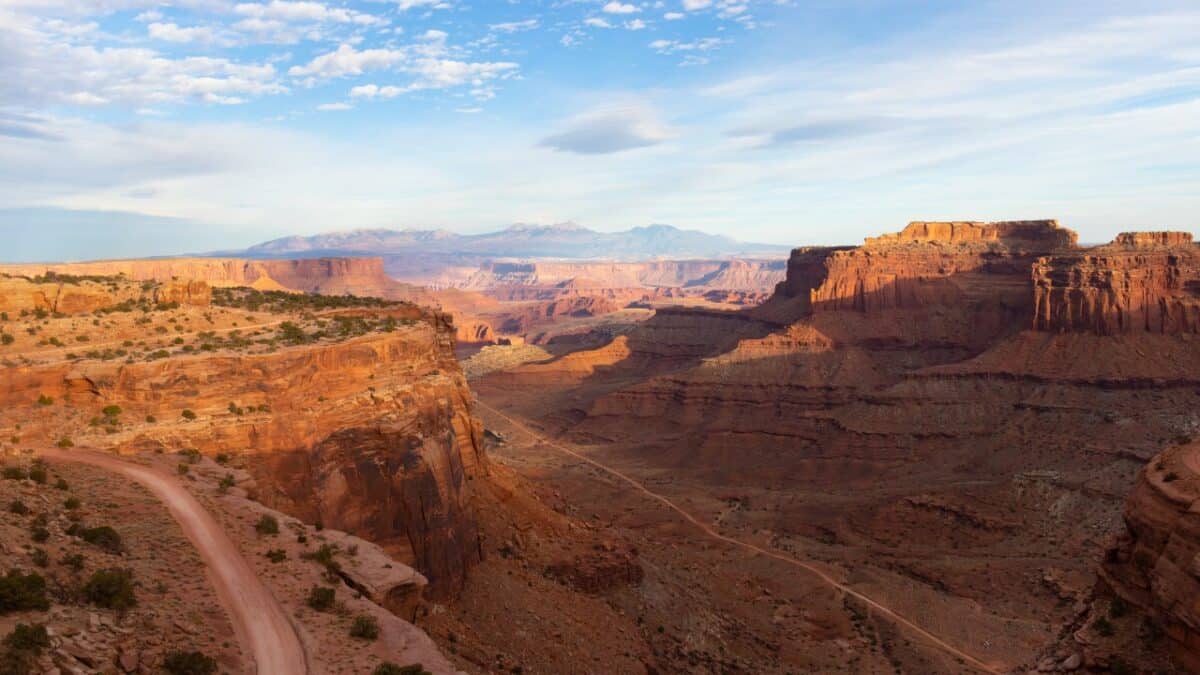
- Map
- Camping frequency: Moderate
- Restrooms: No
- Water: No
If you’re after a bona fide BLM dispersed camping site, you won’t have to worry about heavily-congested campsites with climbers, noisy gear, ATV folks, and mountaineers – Long Canyon Road is the place where you want to get to.
And getting to it won’t be that easy, for the record.
If you mean to go to Long Canyon Road, it’s best to use a 4×4 four-wheeler. The terrain can get bumpy, to say the least, on some parts of the road.
Other than the breathtaking scenery, it’s more than worth braving the rough roads to get to this place because it represents a crossroad between three major points of interest in the area – the town of Moab, the Arches, as well as the Canyonlands National Park.
So, if you’re interested in getting to any of these locations along with capturing some awesome shots of the La Sal mountains in the distance, posting it up on Long Canyon Road can be a fantastic move.
La Sal Loop Road
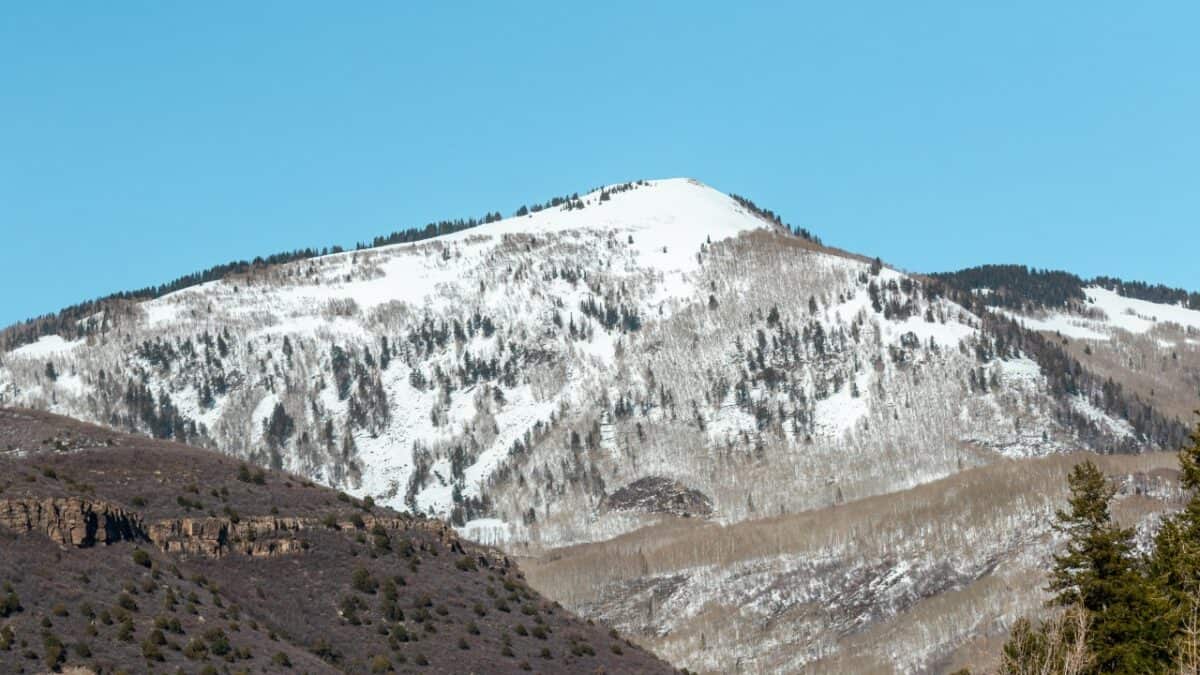
- Map
- Camping frequency: Moderate
- Restrooms: No
- Water: No
The broader Moab area is also home to some pretty stunning-looking green patches.
The La Sal Loop Road is located in the La Sal mountains, which you can access by going some 6 miles south of Moab near US Route 191. (Alternatively, you can also access it via SR 128 near Castle Valley.)
Once you enter the Manti-La National Forest, the first several miles are off-limits for camping because they are private property.
After that, however, you have some 60 miles of road that wind all over these gorgeous mountains. What’s more, attached to this main roadway is a myriad of dirt roads that all lead to areas suitable for pitching a tent.
Regarding finding the best camping spots, the best plan of action would be to head toward the La Sal Loop Lookout Point. From here, you will be able to find a surrounding area full of patches of gorgeous scenery – perfectly suitable for setting up a camp.
Dalton Wells Road Dispersed Campsite
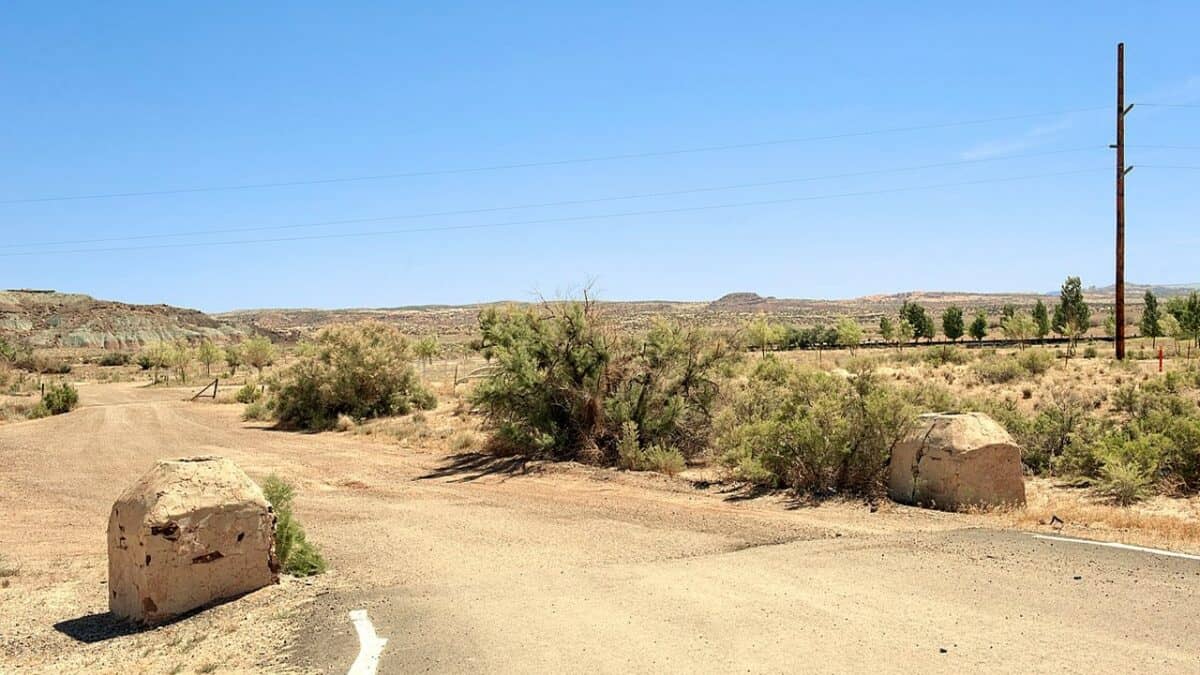
- Map
- Camping frequency: Moderate
- Restrooms: Pit toilets
- Water: No
Located on the Utah State Trust Land, the Dalton Wells Road campsites are perfect for RV campers as the terrain is not so rough, so this area can accommodate almost any size of RV you can imagine.
That said, an important thing to remember is that the phone signal is not that great.
For the first half a mile, camping is forbidden. After you’ve passed these half a mile, camping is allowed, and you will likely see campers parking their RVs and setting up tents (The number of campers you’ll likely encounter depends on whether it’s peak season or not).
Thanks to the sheer size of this picturesque area, you will have more than enough room to find a suitable camping spot for your RV, your tent, trailers, and other stuff you’ve brought with you.
Last but not least, one of the attractions that are often observable from Dalton Wells Road is the hot air balloons launched nearby.
If you are interested in camping in a different setting, but still in the Beehive State, check out our guide to dispersed camping near Zion National Park.
Lone Mesa BLM Dispersed Campground
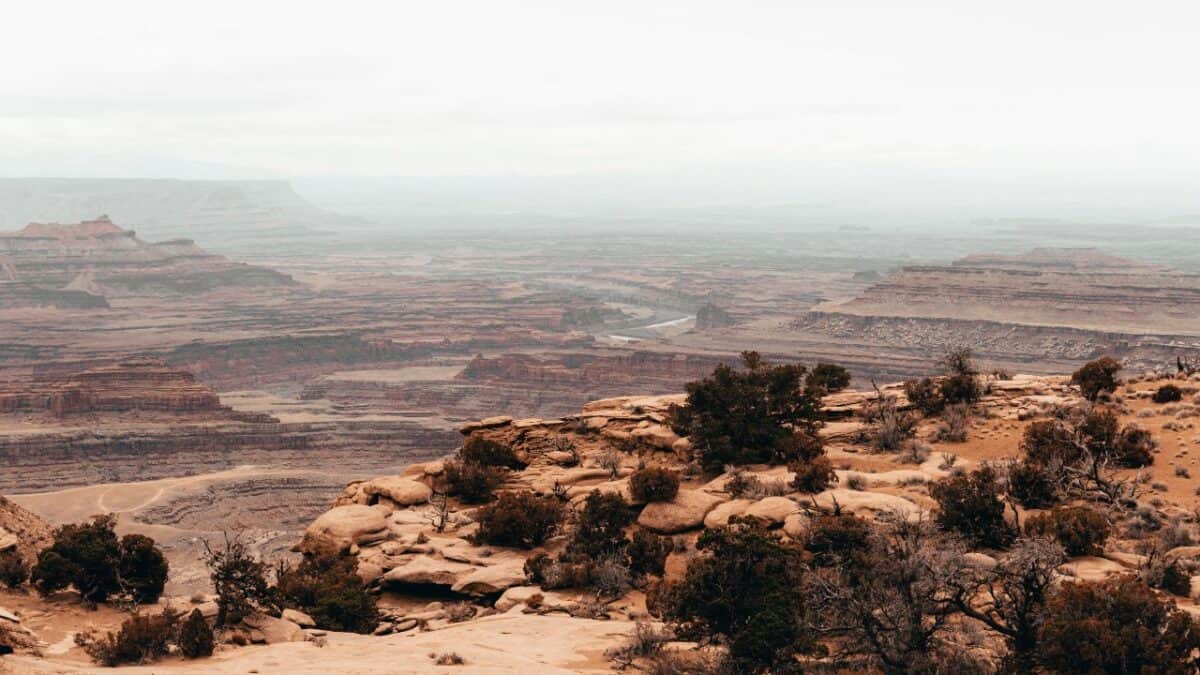
- Map
- Camping frequency: Moderate
- Restrooms: No
- Water: No
After you turn off the pavement, you have about 1.5 miles of gravel road to tackle before reaching this fantastic camping plateau.
Since Lone Mesa stands at an elevation of 5,282 feet, it represents a fantastic lookout point. You can take incredible, National Geographic-worthy photos here with ease – all you need to do is turn in any direction 360° around you – and the scenic views will be there for you to capture.
Other than the visual availability of the surrounding gorgeous nature and points of interest, the Lone Mesa campground is also physically quite close to such noteworthy locations as Moab (25 minutes away), Arches (20 minutes away), and Dead Horse Point (15 minutes away). So, if you fancy taking a little detour to visit these awesome places, Lone Mesa can be the perfect vantage point.
The only thing you may want to pay attention to before heading there is that the temperatures can get quite hot, so be sure to equip your RV with some cooling amenities.
Gemini Bridges Campsites
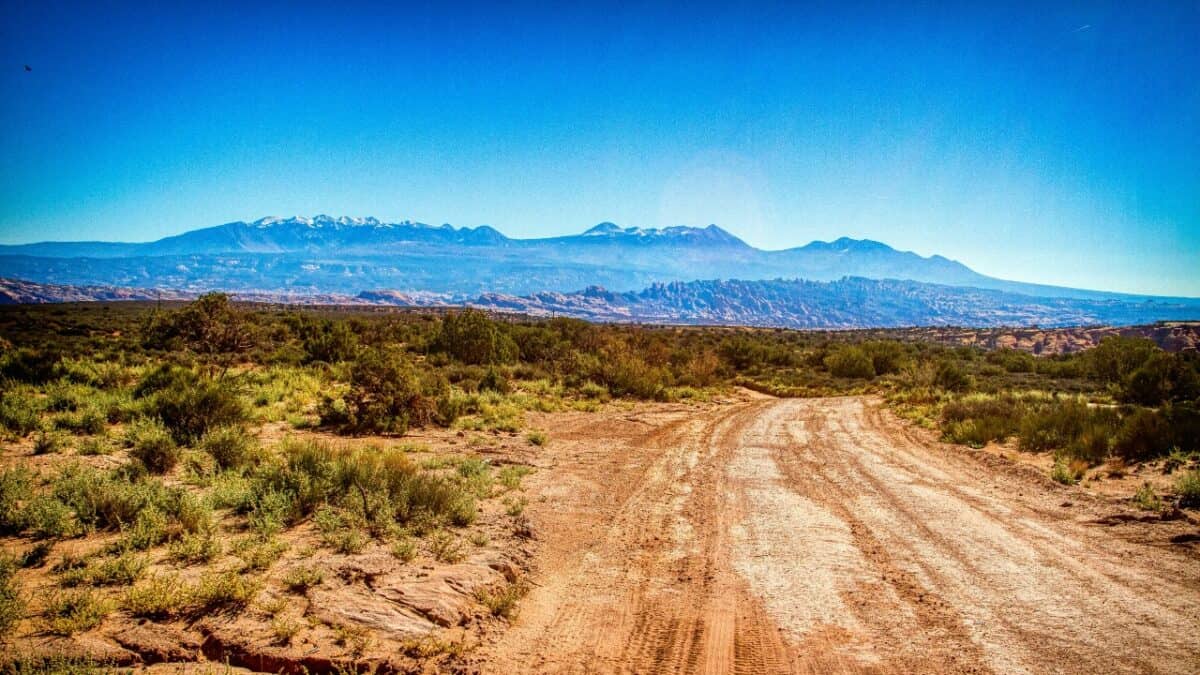
- Map
- Camping frequency: Moderate
- Restrooms: No
- Water: No
This is one of the best examples of designated campsites made by the BLM for nature preservation and easier maintenance.
As we’ve mentioned, the BLM has this policy where they encourage visitors and campers to set up their tents and park their vehicles in previously used camping spots.
This way, the negative impact that camping has on the surrounding nature is minimized.
Anyway, the Gemini Bridges campsites are RV-friendly to an extent, although the rough dirt roads demand more of a 4×4 vehicle to tackle some particularly bumpy portions of it.
Just as anywhere in the Moab area, the campsite offers a fantastic view and some neat hiking routes in case you want to see the whole valley more up and personal, so to speak.
If you are interested in camping elsewhere in Utah, see our detailed guide to Utah dispersed camping.
Conclusion
Whether you’re an RV camper, a glamper that prefers staying at a well-developed RV area with advanced hookups, free Wi-Fi, showers, and the rest of the good stuff, or a proud free dispersed camper that finds its connection with nature through dispersed tenting – Moab’s got you covered.
If you were to spend your life just getting to know this particular area as a camper, it would be a life well spent.
The mighty Colorado river, friendly folks in the town of Moab itself, campers, climbers, ATV folks, RV full-timers, RV part-timers, breathtaking red rock scenery, you name it – and Moab’s got it.

I love hiking, backpacking, and camping. From the Camino de Santiago to the West Highland Way in Scotland or simply a great day hike on the weekend. Hiking refreshes me, my mind, and keeps my body reasonably fit. So far I have walked three Camino routes and many other long distance hikes in the UK, Canada, and around the rest of Europe. One of the best was my hike up Ben Nevis.

